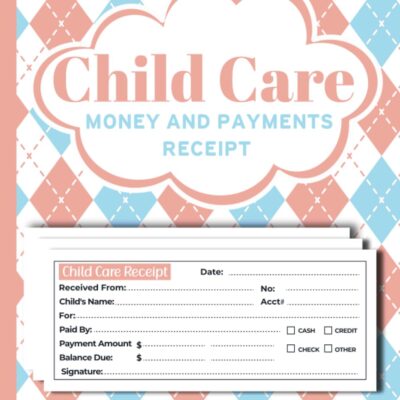Walking to lose weight is one of the simplest ways. It’s easy, accessible, and doesn’t require any fancy gym memberships or intense training. But how exactly can you make walking one of the best ways to burn calories and lose weight? Let’s break it down and give you all the simple steps to achieve weight loss success.
Why Walking Helps You Lose Weight
Walking to lose weight might seem too basic to be a tool, but it’s incredibly effective. Why? Because it burns calories, gets your heart rate up, and is easy to stick to over the long term. When you walk, your body uses energy from the calories you eat. So, by walking regularly, you create a calorie deficit, which is crucial.
Here’s why walking works:
- You burn calories: Walking moderately burns around 100 calories per mile. That adds up quickly, especially if you’re walking daily.
- It’s sustainable: Unlike intense workouts, walking is low-impact and gentle on your joints, so you’re less likely to give up due to injury or exhaustion.
- It’s fat-burning: Since walking is a lower-intensity activity, It gets energy from your fat stores. That means it helps burn fat more efficiently than high-intensity workouts.
How Much Walking Do You Need to Burn Calories?
The big question is, how much do you need to walk to see weight loss results? The good news is you don’t have to spend hours walking each day, but consistency is critical.
Aim for these simple guidelines:
- Time: Try to walk for 30-60 minutes a day. This doesn’t have to be done all at once. You can do it in several shorter walks during the day if that’s easier.
- Pace: Walk at a moderate pace where you can still hold a conversation but are slightly out of breath. This helps burn more calories than a slow, casual walk.
- Frequency: Aim to walk at least five days weekly to see results. This will give you a steady calorie burn and keep your body in fat-burning mode.
Track Your Steps for Better Results
Setting a daily step goal can make walking more like a fun challenge than just a chore. Many people aim for the magic number of 10,000 steps a day, about 5 miles. This objective can assist you in continuing and is easier to hit than you might think.
Why 10,000 steps?
- It’s a good target: Walking 10,000 steps can burn around 400-500 calories, depending on your weight and pace. Over time, those burned calories add up and lead to weight loss.
- It keeps you moving: Aiming for 10,000 steps makes you want to be busy all day, even when you’re not on an official “walk.”
Use a fitness tracker, smartphone app, or simple pedometer to keep track. Seeing your progress can be super motivating!
Walking Tips to Burn More Calories
Now, let’s talk about how to get the most calorie burn from your walks. Walking is effective, but there are ways to increase the intensity and boost your results.
Here’s how you can step it up:
- Walking faster burns more calories. Try brisk walking, where you can feel your heart rate increase, but you’re not out of breath. This small change can increase your calorie burn by up to 30%.
- Adding bursts of speed to your walk can kick your calorie burn into high gear. For example, walk at a moderate pace for 5 minutes, then speed up to a brisk pace for 1-2 minutes. Keep repeating this pattern throughout your walk.
- Find some hills or use a treadmill incline to burn more calories without increasing speed. Walking uphill works more muscles and can help burn more fat quickly.
- Swing your arms as you walk to get your upper body involved. This simple move enables you to burn extra calories and engages more muscles.
Add Strength Training to Your Walking Routine
Want to make your walking routine even more effective? Add a little strength training to the mix. You don’t need to hit the gym—there are easy ways to combine strength and walking.
Here’s how:
- Holding small dumbbells Adding weights to your clothes You can walk faster using a weighted vest or wearing one.
- Stop every few minutes during your walk to do a set of squats, lunges, or push-ups. Adding these moves strengthens your muscles, which helps You burn more calories even when you’re not doing anything.
Sneak Walking Into Your Daily Life
One of the best things about walking is how easy it is to fit into your daily routine. You don’t need to set aside a specific time to work out—find small opportunities to walk more throughout the day. These little walks can add up and help you reach your calorie-burning goals without much extra effort.
Here are some easy ways to do it:
- Take short walks during breaks: If you have a few minutes at work or home, use that time to take a quick walk around the block or office. These mini-walks can add up over the day.
- Park further away: When running errands, park at the back of the parking lot. This adds extra steps without you even noticing!
- Take the stairs: Whenever possible, skip the elevator and take the stairs. It’s a great way to strengthen your legs and burn extra calories.
- Walk and talk: If you’re catching up with friends, suggest a walk instead of sitting down for coffee. It’s a fun way to socialize and get your steps in simultaneously.
Eat Right to Support Your Walking Goals
Walking to lose weight is excellent, but pairing it with a healthy diet will speed up your results. You don’t need to go on a strict diet—focus on making more nutritious choices that fuel your body for walking.
Some simple tips:
- Eat balanced meals: Focus on whole foods like fruits, veggies, lean proteins, and healthy fats. These give you the nutrients and energy you need without extra calories.
- Stay hydrated: Your body works better when you drink water during walks and can prevent overeating (sometimes we mistake thirst for hunger!).
- Avoid sugary snacks: Instead of reaching for chips or candy, choose a snack that provides energy without a sugar crash, like nuts, yogurt, or fruit.
Track Your Progress to Stay Motivated
Keep track of your work to keep you going and see how far you’ve come. Whether it’s the number of steps you’ve taken, the weight you’ve lost, or just how much better you feel, celebrating those small wins is critical to staying on track.
Here’s what to look for:
- Track your weight: Use the scale as a guide, but don’t stress over daily fluctuations. It’s normal for weight to go up and down depending on factors like hydration and time of day.
- Take measurements: Sometimes, you’ll notice changes in your body (like losing inches from your waist) before you see the number on the scale drop. Measure your waist, hips, or thighs to track progress.
- Celebrate milestones: Did you hit your step goal for the week? Did your walk feel easier today than it did a month ago? These are all milestones worth celebrating!
Conclusion
Walking to lose weight is to walk in the most accessible forms of exercise. It doesn’t require special equipment; you can fit it into your day without too much effort. By walking regularly, setting goals, and making minor changes to your routine, you’ll start burning calories and seeing weight loss results in no time. So, put on your walking shoes, track those steps, and enjoy the journey to a healthier, happier you!
If you want to learn my #1 FITVII Fitness Tracker, Smart Watch with 24/7 Blood Pressure, Click Here Now.






